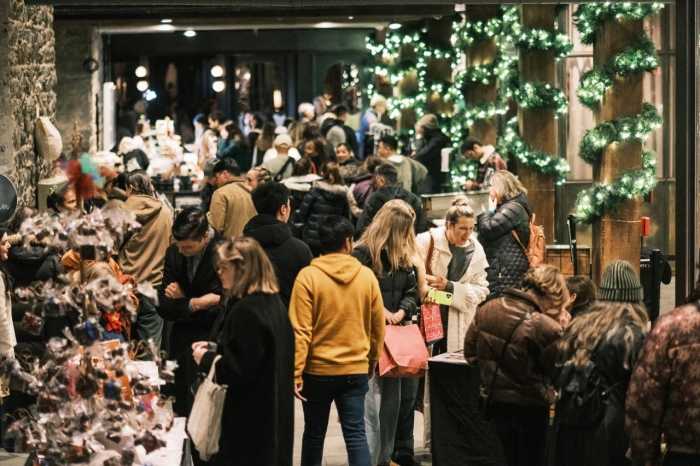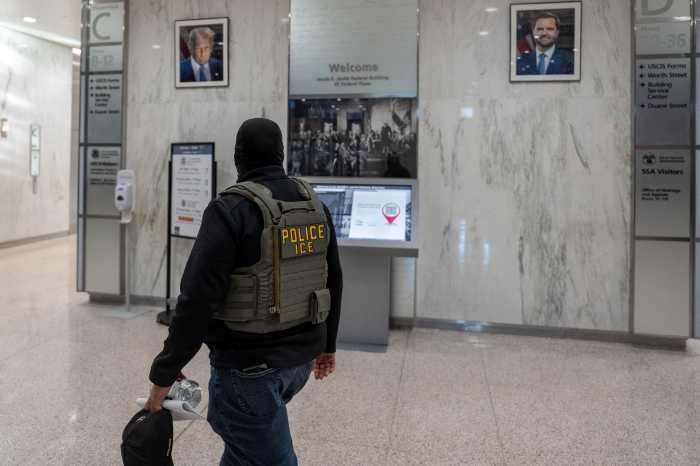The car in front of you might have out-of-state license plates, but that does not mean the driver is a tourist — especially if they’re driving in the Bronx.
The NYC Council published a new report, “Plate and Switch,” on Thursday. The report found that vehicles with “ghost plates” are most prevalent in the Bronx and accrue more fines and serious traffic violations than other cars.
The council’s Oversight and Investigation Divisions (OID) team began its two-month investigation in March by researching the top 10 police precincts that have issued summonses to vehicle drivers for various violations.
Out of the 3,500 vehicles that received violations in that two-month period, 768 had out-of-state plates. Nearly one in five of the 768 vehicles had license plates that were not registered to the vehicles — otherwise known as “ghost plates.”
The Bronx exhibited the highest concentration of ghost vehicles (73 of 242), followed closely by Brooklyn (54 of 193) and Queens (50 of 179).
Only 12 out of 81 ghost vehicles were on Staten Island, where there is limited public transportation and most commuters rely on cars. Similarly, Manhattan fared the lowest, with only 1 out of 73 ghost cars.
The centerpiece of OID’s investigation showed that the ghost plate issue is not limited to temporary or obscured license plates but also includes the intentional use of out-of-state plates to defy traffic laws and enforcement.
Ghost plates have become ‘too commonplace’
Drivers use ghost plates for various reasons, including to avoid getting traffic tickets, paying tolls, being held accountable for crimes, or simply evading enforcement systems altogether. While many vehicles without NYS license plates do, in fact, belong to tourists or commuters, others display fraudulent, expired, mismatched, or even no plates at all.
“The use of ghost plates, especially those from out of state, to evade responsibility for violations and fines has become too commonplace throughout our city,” City Council Speaker Adrienne Adams said. “The council’s investigation into this systemic problem underscores the need for more coordinated enforcement and policies to ensure bad actors who are more likely to commit traffic violations that jeopardize our public safety are held accountable for their actions.”

Not surprisingly, the investigation found that vehicles with mismatched plates — plates that do not link back to the real ownership of the vehicle — committed more traffic and parking infractions, and owed more fines, than vehicles with matching out-of-state plates.
These vehicles are also known as having “no hit” plates, meaning that when authorities run them through the Department of Motor Vehicles system, they do not have listed information.
According to the Council’s investigation, vehicles with mismatched or no-hit plates owed an average of $667.48 compared to $268.08 for vehicles with matched plates. Overall, vehicles with ghost plates paid less than 20% of the fines they incurred, underscoring the lack of traceability and accountability that results in the loss of millions of dollars in fees and fines each year.
Previous reports have shown similar results, with ghost plates costing the city millions in lost revenue.
When motor vehicles with missing, altered or fake license plates pass by traffic cameras, they are unreadable.
“The use of out-of-state license plates, specifically untraceable ghost plates, allow drivers to behave recklessly throughout New York City streets with little to no accountability,” said Council Majority Whip Selvena Brooks Powers, chair of the council’s transportation and infrastructure committee.
Even more concerning, the council’s research showed that there are reports of ghost vehicles fleeing from crash scenes and being used to commit violent crimes.
“Ghost vehicles are not just a nuisance. They are a public safety hazard and an affront to every New Yorker who plays by the rules,” said Manhattan City Council Member Gale A. Brewer, chair of the Committee on Oversight and Investigations. “This investigation shows just how widespread the problem is, from mismatched plates to cars with no plates at all, racking up unpaid tickets and blocking fire hydrants.”
Law enforcement sources have reported that the internet is an easy-access resource that churns out ghost plates from New York and other states. The widespread availability of untraceable, unregistered license plates through various channels is an ongoing scourge for city and state officials, as well as law enforcement agencies.
“It is unacceptable that online marketplaces still allow the sale of fake or fraudulent plates that fuel this crisis,” Brewer added. “The City Council will continue to push for stronger enforcement and tighter oversight so we can keep our streets safe, ensure fair use of curb space, and hold bad actors accountable.”
An ongoing crackdown on fraudulent out-of-state license plates
The detailed report was issued at a time when state and local officials have continued to prioritize enforcement of ghost plates.
Most recently on Aug. 19, the MTA, NYPD and other law enforcement agencies announced they had seized more than 5,300 vehicles with fake or altered license plates since their crackdown on ghost cars began on March 11, 2024.
So far in 2025, the MTA said there have been 38 enforcement operations, which resulted in 1,893 towed vehicles with approximately $11.5 million in unpaid tolls and fees, judgments and debts owed to all task force partners.
MTA Police and Bridge and Tunnel officers alone have issued 16,000 summonses year-to-date, the agency reported.
Since 2022, NYC agencies alone have removed over 110,000 additional ghost cars and illegal vehicles, according to city officials.





































